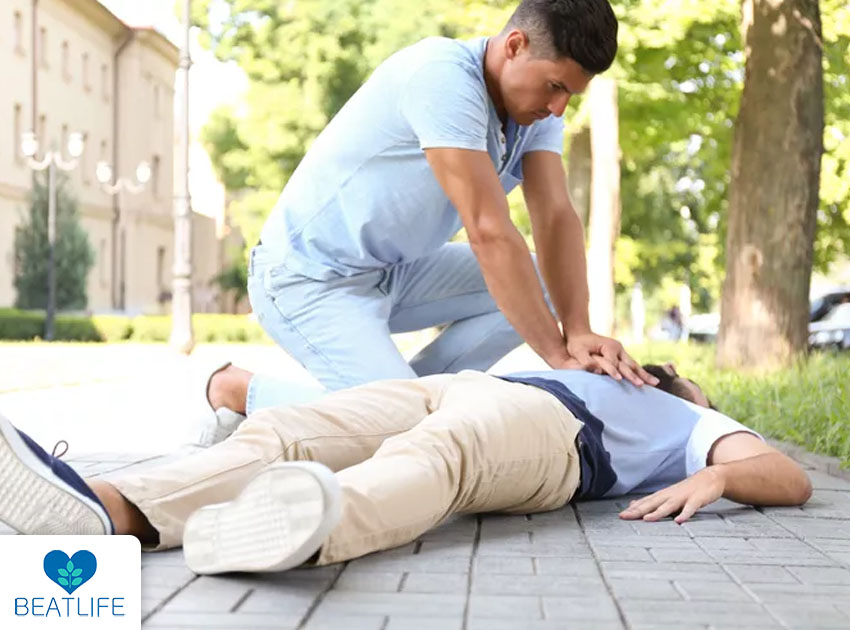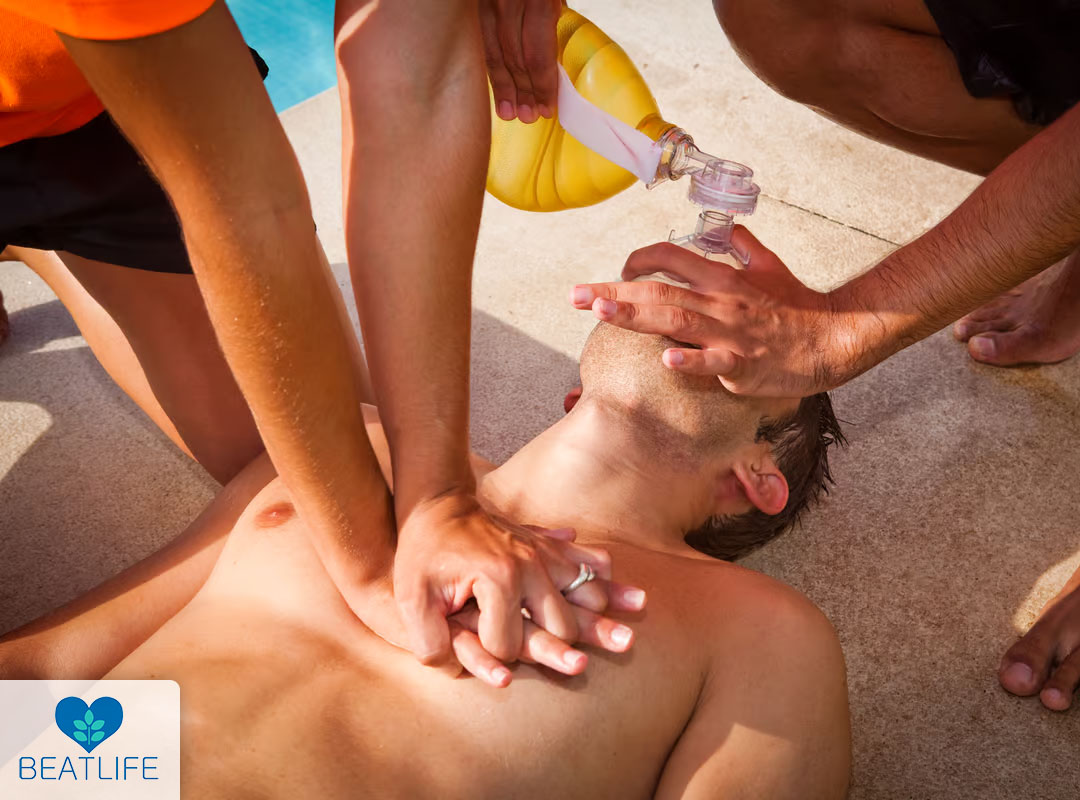CPR is a life-saving measure performed in emergencies when someone is experiencing cardiac arrest. The goal of CPR is to keep someone whose breathing or heartbeat has stopped alive by preserving blood flow and oxygenation. CPR includes a number of protocols and procedures.
In this text, we explore the key features of one of these techniques, known as the 30:2 CPR protocol. We also introduce CPRMETER by BEATLIFE to show how new technological developments bring about improved methods and assist us in saving lives.
One of these protocols is known as the 30:2 CPR protocol.
Contents
How Does Cardiopulmonary Resuscitation Work?
During cardio arrest, when someone’s breathing or heartbeat stops in an emergency, cardiopulmonary resuscitation, or CPR, is performed. This life-saving technique involves manual chest compressions to force blood circulation and supply oxygen to the body’s vital organs. This technique keeps the brain and other organs alive until medical help arrives. CPR consists of a few steps. These steps are fundamental components of CPR, which are as follows:
- Chest compressions
- Checking for responsiveness
- Calling for emergency medical services (EMS), and
- Administrating rescue breaths if needed.
Early CPR and the Chain of Survival: Important and Impacts?
The Chain of Survival is a set of procedures that, when followed in order, greatly raise the chances of survival after cardiac arrest. The Chain of Survival aids in pinpointing the critical moments when action can mean the difference between life and death. Usually, the chain consists of five components:

Early Identification and Call for Emergency Assistance: It’s critical to identify the indications of cardiac arrest and to contact emergency medical services right away.
Early CPR: By starting CPR as soon as a cardiac arrest happens, the chance of survival would increase.
Rapid Defibrillation: Ventricular fibrillation, an irregular heart rhythm, is the primary cause of most cases of sudden cardiac arrest. A defibrillator shocks the heart with electricity to get it back to normal.
Efficient Advanced Life Support: This entails skilled medical professionals carrying out sophisticated procedures like medication administration or intubation.
Post-Cardiac Arrest Care: After a person experiences a cardiac arrest, they require immediate medical attention to stabilize their condition and treat any underlying conditions that may have contributed to the arrest. This is known as post-arrest care. Each step in this chain depends on the one before it. Research indicates that communities with extensive CPR training programs have better cardiac arrest survival rates

30:2 CPR Protocol: What Is It and How Does It Work?
30:2 CPR protocol entails giving two rescue breaths after 30 chest compressions. Giving rescue breaths supply oxygen to the lungs, while performing compressions maintain blood circulation.
The 30:2 ratio is still a key technique in CPR training, even if there are modifications and more recent guidelines that support performing continuous chest compressions without stopping for rescue breaths.
30:2 CPR protocol alternates between 30 chest compressions and 2 rescue breaths. This is how it works:
Check for responsiveness: Prior CPR, tap the patient’s shoulder and call them to see if they are responsive. Make an instant call to emergency medical services (EMS) if they don’t answer.
Perform chest compressions: kneel next to the victim, and place the heel of one hand against the middle of the chest. Place the other hand on top of the first and interlock them. Apply pressure to the chest at a rate of 100–120 compressions per minute and about two inches deep. As you count, aloud, try to get 30 compressions.
Give rescue breaths: To open the victim’s airway, gently tilt their head back with one hand and lift their chin with the other after 30 compressions. Using your fingers, pinch their nose. Then, give two rescue breaths into their mouth, observing as their chest rises with each one.
Repeat cycle: After these steps, go back to performing 30 chest compressions followed by two rescue breaths. Repeat this cycle until EMS shows up or the person begins breathing again.
Global Perspectives and Standardization
Global perspectives and standardization in CPR protocols involve harmonizing resuscitation guidelines across borders to ensure consistency and effectiveness in emergency response worldwide. Organizations such as the American Heart Association (AHA), the European Resuscitation Council (ERC), and the International Liaison Committee on Resuscitation (ILCOR) play pivotal roles in setting international standards for CPR practices. These entities collaborate to establish evidence-based guidelines, disseminate training materials, and promote uniformity in resuscitation protocols. Their efforts extend beyond regional boundaries, emphasizing the importance of a standardized approach to CPR education and implementation. This global collaboration not only facilitates effective training but also ensures that individuals, regardless of their location, are equipped with the knowledge and skills needed to perform high-quality CPR and contribute to improved survival rates in cardiac emergencies.
Learn CPR and Save Lives
Acquiring the knowledge of CPR is an important ability that can save lives in dire circumstances. Here are some tips that can help you become certified in CPR:
Find CPR training programs: Basic life-saving techniques are taught in these courses, which also offer certification upon completion. Select a course that meets your needs based on your preferred learning style and schedule.
Keep your skills up-to-date: CPR procedures are dynamic and are subject to change in response to new findings in medical science and ongoing research. There are also some devices to assist people while performing CPR, such as AED and CPRMETER. CPRMETER is a tool that guarantees performing an effective CPR by giving real-time feedback on the rate and depth of compressions.
Reviewed by Dr Jamshidi Mohammad Reza

